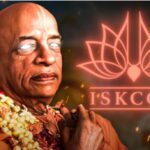From Jawaharlal Nehru’s vision of a modern India to Narendra Modi’s ambitious reforms, explore the remarkable journeys of every Prime Minister who has shaped the nation. This definitive guide unravels their stories, from backgrounds and education to significant achievements and contributions.
Discover inspiring leadership styles, groundbreaking policies, and the challenges faced by each Prime Minister during their tenure. Gain valuable insights into India’s political evolution and the legacies these leaders have left behind. Dive into this comprehensive chronicle of India’s Prime Ministers and understand the forces that have shaped the nation’s destiny.

List of all Indian prime ministers:
The current and fourteenth prime minister of India is Narendra Modi. He will be the first Indian Prime Minister who is not a member of Congress to hold the position for two consecutive terms, making him the fourth Prime Minister in history to do so. The leader of the Republic of India’s government is the Prime Minister. The President of India is the constitutionally designated, ceremonial, and nominal head of state, while the Prime Minister and their Council of Ministers have executive responsibility.
The list of all Indian prime ministers, along with their terms in office from 1947 to 2023, is provided in this article.
The prime minister of India is the head of the executive branch and the presiding officer in a parliamentary system of government. The prime minister is usually the leader of the party or coalition that has a majority in the Lok Sabha, the lower house of the Indian Parliament and the primary legislative body of the Republic of India. The prime minister’s permanent accountability body is the Lok Sabha.
India’s prime minister is appointed by the president; but, to stay in office, the PM needs the backing of the majority of the directly elected Lok Sabha members, who are chosen every five years. The prime minister may be a member of either the Rajya Sabha or the Lok Sabha, the parliament’s upper body. The prime minister has complete control over the nomination and removal of members of the Union Council of Ministers as well as the distribution of jobs within the cabinet.
The Indian Prime Ministers’ List, 1947–2023 is available here:
1. Jawaharlal Nehru

Age: Born on November 14, 1889, and was 74 years old when he passed away.
Sex: Male
Education: Educated at Harrow and Trinity College, Cambridge.
Home: Anand Bhavan, Allahabad
Tenure: August 15, 1947 – May 27, 1964
Major Contribution: Nehru was instrumental in laying the foundations of modern India, with a focus on democracy, unity, and economic development. He initiated the non-aligned movement and worked ardently towards the development of science and technology in the country.
2. SHRI GULZARILAL NANDA

May 27, 1964 to June 9, 1964
January 11, 1966 to January 24, 1966
Shri Gulzarilal Nanda was the second Prime Minister of India and he served the nation for two brief terms. He was instrumental in organising the Indian National Trade Union Congress. He was awarded the Bharat Ratna, India’s highest civilian award, in 1997.
3. Lal Bahadur Shastri

Name: Lal Bahadur Shastri
Age: Born on October 2, 1904, and sadly passed away at the age of 61.
Sex: Male
Education: Graduated from Kashi Vidyapeeth.
Home: 10, Janpath, New Delhi
Tenure: June 9, 1964 – January 11, 1966
Major Contribution: Shastri’s leadership during the Indo-Pakistan War of 1965 and his call for self-reliance through the “Jai Jawan Jai Kisan” (Hail the Soldier, Hail the Farmer) slogan left an indelible mark on the nation.
4. Indira Gandhi

Name: Indira Gandhi
Age: Born on November 19, 1917, and unfortunately assassinated at the age of 66.
Sex: Female
Education: Educated at Somerville College, Oxford.
Home: 12, Willingdon Crescent, New Delhi
Tenure: January 24, 1966 – March 24, 1977 and January 14, 1980 – October 31, 1984
Major Contribution: She was known for her leadership during the Bangladesh Liberation War and for promoting the Green Revolution in India, thereby bringing agricultural self-sufficiency to the country.
5. SHRI MORARJI DESAI

March 24, 1977 to July 28, 1979
Shri Morarji Desai served as Prime Minister of India for 2 years from 1977 to 1979. The Forty-fourth Amendment of the Constitution of India was enacted during his tenure as Prime Minister. Shri Morarji Desai passed away at the age of 99 in Mumbai, making him the world’s oldest former head of government.
6. CHAUDHARY CHARAN SINGH

July 28, 1979 to January 14, 1980
Chaudhary Charan Singh served as Prime Minister of India for 170 days. Throughout his life he tried to improve the conditions of farmers. His birth anniversary, 23 December, is celebrated as Kisan Diwas.
7. Rajiv Gandhi

Name: Rajiv Gandhi
Age: Born on August 20, 1944, and tragically assassinated at the age of 46.
Sex: Male
Education: Attended University of Cambridge, Imperial College London, and Trinity College, Cambridge.
Home: 10, Janpath, New Delhi
Tenure: October 31, 1984 – December 2, 1989
Major Contribution: He played a pivotal role in introducing technological advancements in India, with a particular emphasis on the IT sector.
8. Vishwanath Pratap Singh

Name: Vishwanath Pratap Singh
Age: Born on June 25, 1931, and passed away at the age of 77.
Sex: Male
Education: Educated at Allahabad University and Pune’s Fergusson College.
Home: 3, Motilal Nehru Place, New Delhi
Tenure: December 2, 1989 – November 10, 1990
Major Contribution: Singh’s term was marked by significant economic reforms, including the implementation of the Mandal Commission report and the initiation of economic liberalization measures.
9. Chandra Shekhar

Name: Chandra Shekhar
Age: Born on July 1, 1927, and passed away at the age of 80.
Sex: Male
Education: Obtained a postgraduate degree in political science from Allahabad University.
Home: 3, South Avenue, New Delhi
Tenure: November 10, 1990 – June 21, 1991
Major Contribution: Known for promoting social justice and leading various coalition governments, aiming to stabilize India’s political landscape amidst significant challenges.
10.P. V. Narasimha Rao

Name: P. V. Narasimha Rao
Age: Born on June 28, 1921, and passed away at the age of 83.
Sex: Male
Education: Studied at Fergusson College, University of Bombay and Nagpur University.
Home: 9, Motilal Nehru Marg, New Delhi
Tenure: June 21, 1991 – May 16, 1996
Major Contribution: Rao’s term saw substantial economic reforms, including the liberalization of the Indian economy and the dismantling of the License Raj, opening up pathways for increased foreign investment and modernization of industries.
11. SHRI H. D. DEVE GOWDA

June 1,1996 to April 21, 19997
Shri Haradanahalli Doddegowda Deve Gowda served as Prime Minister of India for slightly less than a year. He focused on the farmers of the country and is also credited for kickstarting the Delhi Metro project. He is popularly called the ‘son of the soil’ for his contributions to agriculture.
12. SHRI INDER KUMAR GUJRAL

April 21, 1997 to March 19, 1998
Shri Inder Kumar Gujral became the Prime Minister for slightly less than a year. He worked with various ministries in different capacities before becoming the Prime Minister of India. He is known for the Gujral Doctrine, which is considered a milestone in India’s foreign policy.
13. Atal Bihari Vajpayee

Name: Atal Bihari Vajpayee
Age: Born on December 25, 1924, and passed away at the age of 93.
Sex: Male
Education: Graduated in Hindi, English, and Sanskrit from Victoria College in Gwalior.
Home: 6-A, Krishna Menon Marg, New Delhi
Tenure: May 16, 1996 – June 1, 1996 and March 19, 1998 – May 22, 2004
Major Contribution: Vajpayee’s tenure is remembered for the Pokhran-II nuclear tests, the development of national infrastructure through initiatives like the National Highways Development Project, and his efforts to improve India-Pakistan relations.
14. Manmohan Singh

Name: Manmohan Singh
Age: Born on September 26, 1932.
Sex: Male
Education: He completed his D.Phil. in economics from the University of Oxford.
Home: 3, Motilal Nehru Place, New Delhi
Tenure: May 22, 2004 – May 26, 2014
Major Contribution: Singh’s leadership was marked by significant economic reforms, including the Indo-US Civil Nuclear Agreement, the Mahatma Gandhi National Rural Employment Guarantee Act (MGNREGA), and several initiatives promoting foreign direct investment and economic growth.
15. Narendra Modi

Name: Narendra Modi
Age: Born on September 17, 1950.
Sex: Male
Education: Graduate in political science from Delhi University.
Home: 7, Lok Kalyan Marg, New Delhi
Tenure: May 26, 2014 – present
Major Contribution: Modi’s tenure has been characterized by various transformative initiatives, including the Swachh Bharat Abhiyan, Make in India, the Goods and Services Tax (GST), the Digital India campaign, and initiatives promoting renewable energy and sustainable development.
As for salaries, the PM’s salary in India is determined by the Parliament. Currently, the Prime Minister of India receives a monthly salary of ₹1.6 lakh along with other allowances.
Each leader has steered India’s destiny in their own unique way, leaving a profound impact on the nation’s history. They’ve contributed to shaping India’s political, economic, and social landscape. It’s a fascinating saga of leadership and nation-building!
(Note all pic and info collect form: Pmsangrahalaya)
You May Also Read:










